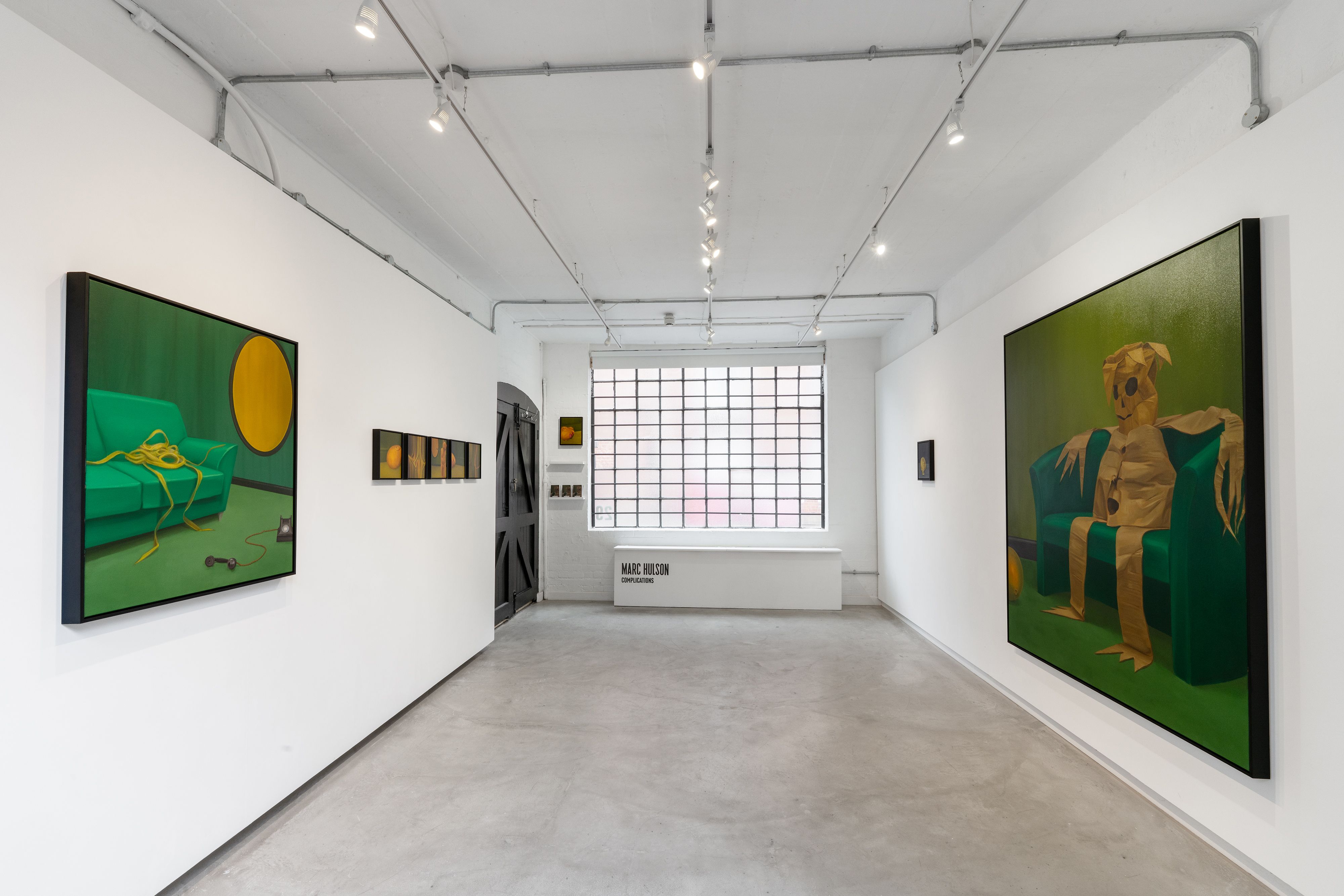
Each painting conjures up an alternative reality. These are evidently composed scenes, populated with familiar objects and furniture, interrupted by elements of the supernatural, science fiction, folklore, or theatre. Hulson’s process frequently begins with the making of a model or maquette. This physical act of scene-making underpins the final image, and is reiterated as he builds layered, uncanny worlds within the frame.
These worlds are ambiguous, leaving the time of day, the location or nature of the space undetermined.
Meanwhile the figures within them seem isolated, lonely or perhaps trapped. Their physicality often crushed or deflated, enclosed, enveloped or incubated by the objects and environments they interact with. Through these figures, Hulson probes notions of the body as a vessel - robotic or animal - versus the sentient, soulful or purposeful mankind we imagine ourselves to be.
While his paintings use the masks, sets, props and costumes of theatre, they resist linear narrative. Instead, they offer something like a reliquary for storytelling’s skeletal remains, unless the viewer chooses to make one of their own. In this way, the paintings function as devices for contemplation. Specifically, they focus in on the complexity of the question,
the point where variant enigmas and obsessions converge or collide.
Themes of gender and sexual ambiguity, the otherworldly and the mundane coalesce into portraits of the ‘self as other’. His work speaks to those who harbour an irreconcilable desire to escape, whether through a screen, the pages of a novel, a fetish, a daydream, a fantasy, or an outsider ritual.
)
)
)